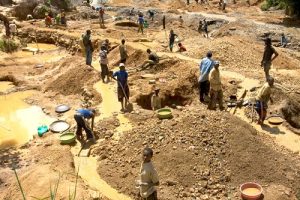
The just ended year, 2023 has availed an important opportunity for Ethiopia to showcase its wide ranging endeavors of contributing to the global efforts of addressing the looming environmental crisis. Ethiopia used COP28 as an opportunity to showcase its efforts to reduce greenhouse gas emissions and adapt to the impacts of climate change. This could include highlighting renewable energy projects, sustainable land management practices, and initiatives to build climate-resilient infrastructure.
As underlined by Prime Minister Abiy Ahmed (PhD), the issue of addressing climate change has been more than three decades since climate change is a global political issue. The country has kept momentum with international conventions and made good strides in combining the climate agenda with the sociopolitical and economic dimensions of sustainable development.
All the regimes that ruled the country throughout the times have also shown due commitment to properly respond to the global efforts of containing the climate threat. Taking the importance of mitigating climate change impacts, the current government also has made various efforts. Ethiopia is making efforts to protect and heal the planet while ensuring growth and prosperity.
The interventions that the country executed especially after the incumbent assumed office can be summarized in three major categories as presented in the COP 28 Summit held in Dubai.
The Green Legacy Initiative
The first and master piece environmental protection project of the country is the Green Legacy Initiative (GLI). This initiative is a powerful nature-based solution launched in 2019 is under implementation for about 5 years now.
The government has shown state of the art mode of leadership in discharging the mega initiative starting from the establishment of more than 1 hundred thousand nurseries across the country and mobilizing almost the entire population, foreigners and diplomats in the plantation activities. Ethiopia’s Green Legacy initiative represents a proactive response to pressing environmental and socioeconomic challenges. it reduces carbon emission preserves biodiversity, create jobs, and boost sectors such as tourism.
He stated “I am proud to say that this initiative has received remarkable success by planting 32.5 billion seedlings. Our target is to reach 50 billion by 2026. When completed the initiative will become the largest afforestation project in the world. The impact of our initiative extends beyond borders as we are sharing seedlings with our neighboring countries. It can further play a catalytic role in Africa and complement existing initiatives such as the Africa ForestLandscape Restoration Initiative and the Great Green Wall.
Yelemat Tirufat
Second, the country is taking action to transform the food system since climate change, biodiversity, water resources, people and food systems are strongly interrelated. Accordingly, Ethiopia has successful interventions in planting various drought-tolerant crops and using climate-smart irrigation-based technology like the national summer wheat production program whereby Ethiopia produces 6 million hectares in one year. This makes the country the largest wheat producer in Africa and relieved from wheat import dependency and made a wheat exporting country.
As part of the Green Legacy initiative, Ethiopia has extensively expanded the cultivation of perennial crops and fruits. Furthermore, it diversifies sector-prone practices to mitigate the impacts of climate change and promote nutrition-sensitive agriculture. The country has been also working to increase the supply of poultry, dairy, livestock, and honey products through a program called “Yelemat Tirufat”. The country has also an urban initiative whereby it encourages eco-friendly and resource-efficient greening and farming matters for sustainable agricultural practice which optimizes effective water management and prioritizes investments in renewable energy-based irrigation systems.
Promoting Clean Energy
Ethiopia has also been investing extensively in renewable and green energy resources. It has the potential to generate over 60,000 megawatts of clean energy by expanding hydropower, solar, wind, and geothermal sources. Ethiopia’s target is to triple the current power generation capacity and double its energy utilization efficiency by 2030. This in turn will allow the country to achieve universal access to electricity, minimize dependency on biomass fuel, and provide the opportunity for industries to reach their net zero targets by 2050.
Ethiopia also takes bold actions in the transport sector. It adopted policies to encourage the use of electrical vehicles that resulted in a sharp increase of hybrid and electric cars on the roads while reducing the macroeconomic burden of importing fuel. Similarly, Ethiopian Airlines is modernizing its Fleet by acquiring new energy-efficient aircraft. Furthermore, the country has electrified Railways a growing non-motorized transport infrastructure, and is expanding into a mass transit system.
However, Ethiopia has shown its commitment and determination in fighting the impact of climate change, but much remains to be done. It requires collective Global action for a stepped-up climate agenda the major challenge in scaling solutions is the cost of capital and how International financing is structured no country can effectively confront the climate challenge.
BY EPHREM ANDARGACHEW
THE ETHIOPIAN HERALD SPECIAL EDITION 31 DECEMBER 2023





